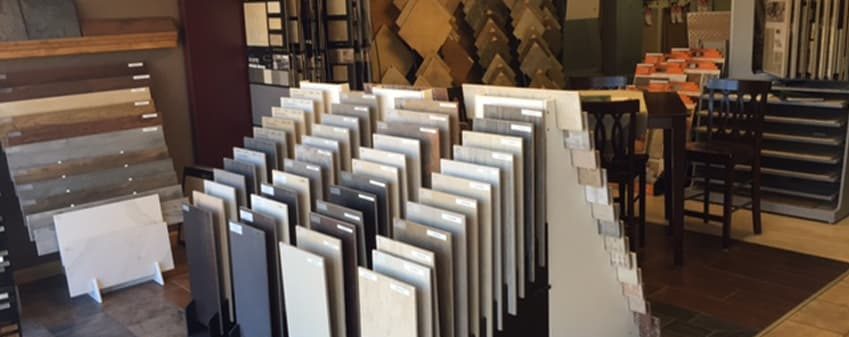How to Buy Iranian Tiles: Advantages and Disadvantages of Importing from Iran
The Timeless Appeal of Iranian Tiles
Iranian tiles have a legacy that stretches back thousands of years, blending art, history, and functionality into every piece. These tiles have graced the floors and walls of Persian palaces, mosques, and homes, showcasing intricate patterns and vivid colors that remain unmatched. From the iconic blue-and-white designs of Isfahan to the lustrous tiles of Kashan, Iranian craftsmanship has earned a global reputation for excellence.
Today, architects, designers, and homeowners worldwide seek out Iranian tiles to bring a touch of elegance and tradition to their spaces. But how do you go about buying these tiles? And what are the real benefits and challenges of importing them from Iran? This guide answers those questions, offering a step-by-step approach to sourcing Iranian tiles while weighing the pros and cons. Whether you’re renovating a home or managing a large-scale project, this article will equip you with the knowledge to make smart, informed decisions.
What Makes Iranian Tiles Special?
A Glimpse into Their History
Iranian tiles trace their origins to ancient Persia, with early examples found in the 13th-century BC Elamite Temple at Choqa Zanbil. Over time, techniques evolved, reaching their peak during the Safavid era (1501–1736). Artisans perfected methods like haft rang (seven-color tiling), creating durable, breathtaking designs that adorned landmarks like the Shah Mosque in Isfahan. This rich history isn’t just a footnote—it’s a testament to the enduring quality and beauty of Iranian tiles.
Types of Iranian Tiles to Explore
Iranian tiles come in a variety of styles, each with distinct features. Here’s a closer look at some popular options:
- Haft Rang Tiles: Famous for their seven-color palette, these tiles often feature floral or geometric patterns. They’re durable and ideal for high-traffic areas.
- Moarraq Tiles: These mosaics are crafted from tiny glazed pieces, forming intricate designs. They’re perfect for decorative accents.
- Ghalamzani Tiles: Hand-painted with scenes from Persian culture, these tiles are unique artworks, often used as focal points.
- Izadkhasti Tiles: Known for their blue-and-white simplicity, they echo Persian influences with a modern twist.
- Luster Tiles: With a shimmering, metallic finish, these tiles reflect light beautifully, adding luxury to any space.
Understanding these types helps you choose tiles that match your project’s aesthetic and functional needs.
How They’re Made
Iranian tiles are typically crafted from ceramic or porcelain, using a process that blends tradition with precision:
- Clay Sourcing: High-quality clay is harvested from Iran’s natural deposits.
- Molding: Tiles are shaped by hand or machine, depending on the design.
- Glazing: A glass-like coating is applied, enhancing durability and shine.
- Firing: Kilns heat the tiles to lock in the glaze and strengthen the material.
- Decoration: Artisans paint or assemble patterns, ensuring each tile is a masterpiece.
This careful process is why Iranian tiles stand out for both beauty and longevity.
How to Buy and Import Tiles from Iran
Buying Iranian tiles involves more than just picking a design—it’s a multi-step process that requires planning. Here’s how to do it right.
Step 1: Find Trusted Suppliers
Your journey starts with finding reliable Iranian tile suppliers. Here’s how to begin:
- Online Research: Platforms like Alibaba or trade directories list Iranian exporters. Cross-check reviews to ensure credibility.
- Trade Events: Visit shows like the Iran Ceramic & Tile Exhibition to meet manufacturers directly.
- Industry Connections: Ask peers or join online forums for supplier recommendations.
Look for suppliers with experience, a solid product range, and positive feedback. A reputable supplier sets the foundation for a successful import.
Step 2: Evaluate Quality with Samples
Before committing, order samples to test the tiles firsthand. Why? Because:
- Visual Accuracy: Photos can’t fully capture color or texture.
- Strength: Check for resistance to scratches or moisture.
- Consistency: Ensure handcrafted tiles meet your standards.
Samples are a small investment that can prevent big disappointments later.
Step 3: Navigate Import Regulations
Importing from Iran means dealing with regulations on both ends. Key points to consider:
- Licenses: Your country may require an import permit for construction materials.
- Tariffs: Duties vary—ceramic tiles might face 0-10% tariffs in places like the U.S.
- Sanctions: While tiles are usually exempt, check for banking or trade restrictions.
A customs broker can guide you through this, ensuring compliance and smooth processing.
Step 4: Arrange Safe Shipping
Tiles are fragile, so shipping needs extra care:
- Packaging: Opt for sturdy crates or padded boxes to minimize breakage.
- Transport Options: Sea freight is cost-effective for bulk orders; air freight is faster but pricier.
- Insurance: Protect your investment with coverage for damage or loss.
A freight forwarder can handle logistics, leaving you free to focus on your project.
Step 5: Budget Wisely
Costs extend beyond the tiles themselves. Plan for:
- Shipping: Varies by distance and volume.
- Duties and Taxes: Include tariffs and VAT in your calculations.
- Extras: Factor in port fees or currency exchange rates.
A detailed budget keeps your finances on track and avoids surprises.
Advantages of Importing Iranian Tiles
Why choose Iranian tiles over other options? Here are the top benefits.
Unmatched Quality
Iranian tiles are a product of centuries of expertise:
- Durability: High firing temperatures and quality clay ensure long-lasting performance.
- Beauty: Intricate designs elevate any space.
- Craftsmanship: Artisans bring skill and passion to every tile.
This quality makes them a smart choice for projects that demand excellence.
Affordable Pricing
Iranian tiles offer premium quality at lower costs:
- Resource Availability: Abundant clay keeps material prices down.
- Labor Efficiency: Skilled workers in Iran earn less than in Western markets.
- Scale: Over 150 tile factories drive competitive pricing.
Buyers can save 20-40% compared to European or American alternatives.
Cultural Significance
These tiles carry a story:
- Heritage: Designs reflect Persian art and history.
- Uniqueness: They add authenticity to themed or historical projects.
- Value: Properties with Iranian tiles often stand out in the market.
This cultural edge appeals to those seeking more than just functionality.
Variety of Choices
From traditional to modern, Iranian tiles cater to all tastes:
- Patterns: Geometric, floral, or calligraphic options abound.
- Materials: Ceramic or porcelain suits different needs.
- Finishes: Glossy, matte, or lustrous surfaces enhance versatility.
This range ensures you’ll find the perfect fit for your vision.
Disadvantages of Importing Iranian Tiles
While the perks are clear, importing from Iran has its hurdles. Here’s what to watch out for.
Shipping Complications
Distance and fragility pose risks:
- Damage: Tiles can break despite careful packing.
- Delays: Customs or weather can slow delivery.
- Costs: Shipping eats into savings for small orders.
Plan ahead and use experienced shippers to reduce these issues.
Communication Challenges
Working with Iranian suppliers can test your patience:
- Language: English isn’t always fluent, leading to mix-ups.
- Time Zones: Iran’s IRST is 3.5 hours ahead of GMT, complicating calls.
- Cultural Gaps: Business norms may differ.
A translator or local contact can smooth things over.
Trade and Regulatory Barriers
International trade with Iran isn’t always straightforward:
- Sanctions: Banking restrictions can delay payments.
- Paperwork: Export/import documents require precision.
- Policy Shifts: Rules can change, affecting plans.
Stay updated and consult experts to navigate this landscape.
Quality Variations
Handmade tiles can vary:
- Color: Glazes may differ slightly between batches.
- Size: Traditional methods might lead to uneven edges.
- Guarantees: Warranties may be limited.
Specify your needs clearly and inspect shipments upon arrival.

Tips for a Smooth Importing Experience
Maximize success with these practical strategies.
Research Suppliers Thoroughly
- Check Reputation: Look for reviews or past client feedback.
- Verify Credentials: Confirm registration with Iran’s trade authorities.
- Test Capacity: Ensure they can meet your order size and timeline.
A solid supplier reduces risks.
Know Your Costs
- Get Quotes: Compare shipping and insurance rates.
- Calculate Duties: Use online tools or brokers for accuracy.
- Plan for Extras: Include all fees in your budget.
Transparency keeps finances in check.
Prepare for Delays
- Order Early: Build in buffer time.
- Track Progress: Monitor shipping updates.
- Backup Plan: Have alternatives ready if needed.
Proactivity keeps your project on schedule.
Improve Communication
- Use Tools: Apps like Google Translate help with basics.
- Schedule Smart: Align calls with time zones.
- Document Deals: Written records clarify agreements.
Clear communication builds trust.
Hire Help if Needed
- Local Agents: Negotiate and oversee logistics.
- Brokers: Handle customs and compliance.
- Experts: Offer insights for big orders.
Professional support can save time and money.
Conclusion: Is Importing Iranian Tiles Right for You?
Buying Iranian tiles offers a chance to bring exceptional quality and cultural richness into your space at a competitive price. Their durability, affordability, and unique designs make them a standout option for any project. Yet, the process comes with challenges—shipping logistics, regulatory hurdles, and communication gaps require careful handling.
With the right approach—researching suppliers, budgeting wisely, and planning for delays—you can overcome these obstacles and enjoy the rewards. Iranian tiles aren’t just materials; they’re a bridge to history and artistry that can transform your home or business.
Ready to get started? Explore suppliers, request samples, and take the first step toward importing Iranian tiles. The effort is worth it for the beauty and value they bring.
قیمت های موجود در سایت تاریخ بروزرسانی آن ها ذکر شده و قیمت نهایی محصولات نمی باشند. لطفا جهت ثبت سفارش و استعلام قیمت بروز با کارشناسان ما در ارتباط باشید.
(035-3357)